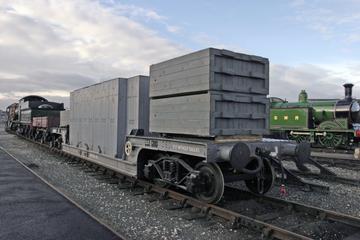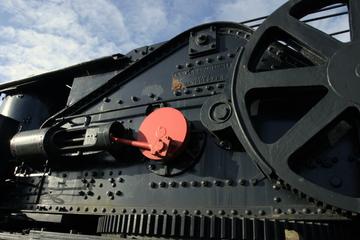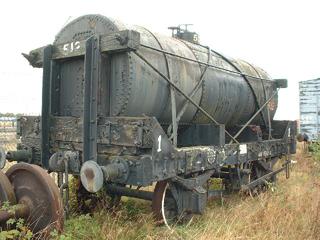
British Railways Special Cattle Van, 1951
- Made:
- 1951 in Lancing carriage works
- railway company:
- British Railways





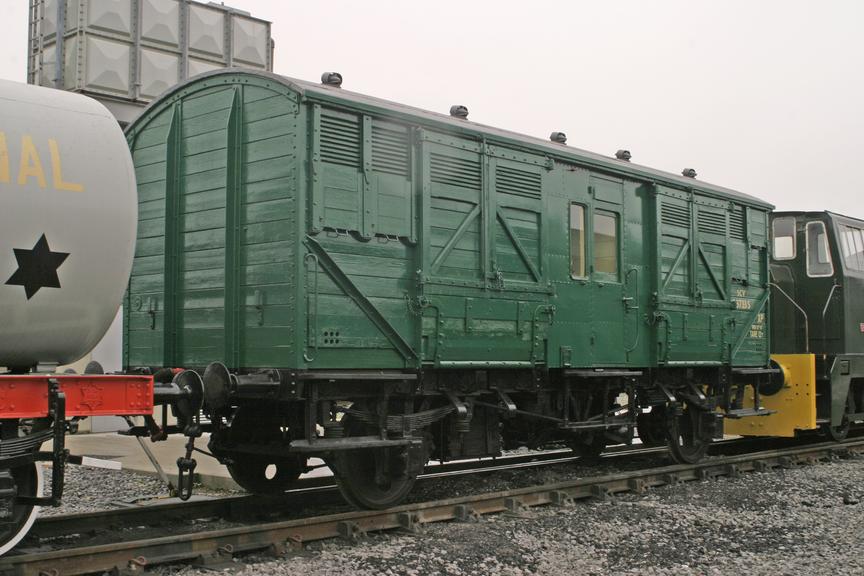



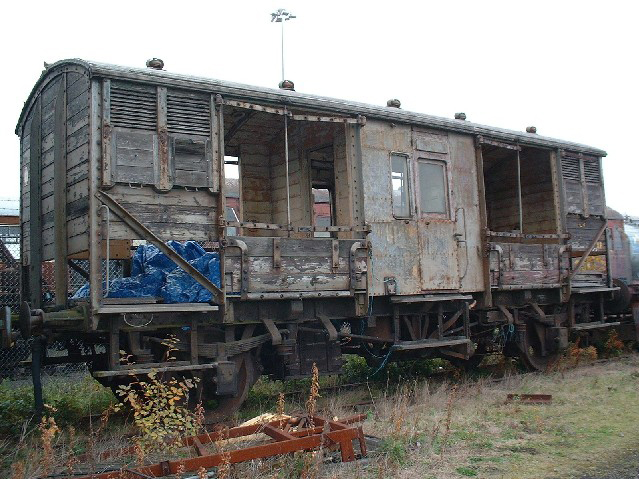
Cattle Van, railway wagon, No. 3733 8 ton Special Cattle Van, British Railways (Southern Region), built Lancing Works 1951. (Built to diagram number 3141, construction span 1930-1951, number built 60). Length over buffers: 29' 5"; weight: 12 tons.
By providing long-distance transport, the railways were important to the agricultural economy and were used to carry both produce and livestock. However, while cattle could be moved from port to farm, and from farm to market or abattoir in purpose-built ventilated livestock vans, a higher standard of accommodation was required for carrying high-value prize bulls or pedigree livestock to agricultural shows, markets or for breeding. Many of Britain’s railway companies possessed small fleets of ‘Special Cattle Vans’ or 'Show Cattle Vans' (SCV) to meet the needs of this traffic, although these were far outnumbered by the ordinary ventilated livestock van.
Emerging in 1951 from British Railways’ (BR) Lancing Works, No. S3733S was one of 10 built to complement another 50 of the same design constructed for the Southern Railway by the Birmingham Railway Carriage & Wagon Co. between 1929 and 1930. All replaced earlier, life-expired vehicles. Unlike ventilated livestock vans, there are two fully enclosed compartments for animals at either end. This example includes a central compartment for a herdsman – who supervised the animals during loading and on the journey – and electric lighting.
The SCV is equipped with vacuum braking and steam heating pipes, allowing it to be coupled to passenger trains. The compartments for the animals feature adjustable louvres to aid air circulation, while battens were secured to the floor to provide grip. As with ventilated livestock vans, care was undertaken to ensure there were no prominent projections on the compartment walls that might cause injury.
SCVs – as well as brake-fitted or piped ventilated cattle vans – were marshalled in a way that minimised the amount of shunting required. Whenever shunting took place, it had to be undertaken gently. While empty, SCVs could be moved where required by goods train. Both ventilated cattle vans and SCVs had to be scrupulously clean, as did the loading pens. Sawdust was usually added to improve grip on the floor.
Always labour-intensive for farmer and railway worker alike, cattle traffic on Britain’s railways was already declining in favour of road transport by the time this van was built. By 1962 British Railways had reduced the number of stations which would accommodate cattle traffic, and the practice was eventually stopped.
Details
- Category:
- Locomotives and Rolling Stock
- Object Number:
- 1988-7012
- Materials:
- wood (unidentified) and metal (unknown)
- Measurements:
-
length over buffers: 8966 mm,
weight: 12193 kg
width: 2590 mm
- type:
- cattle van and railway wagon
- credit:
- British Rail, Historical Relics
